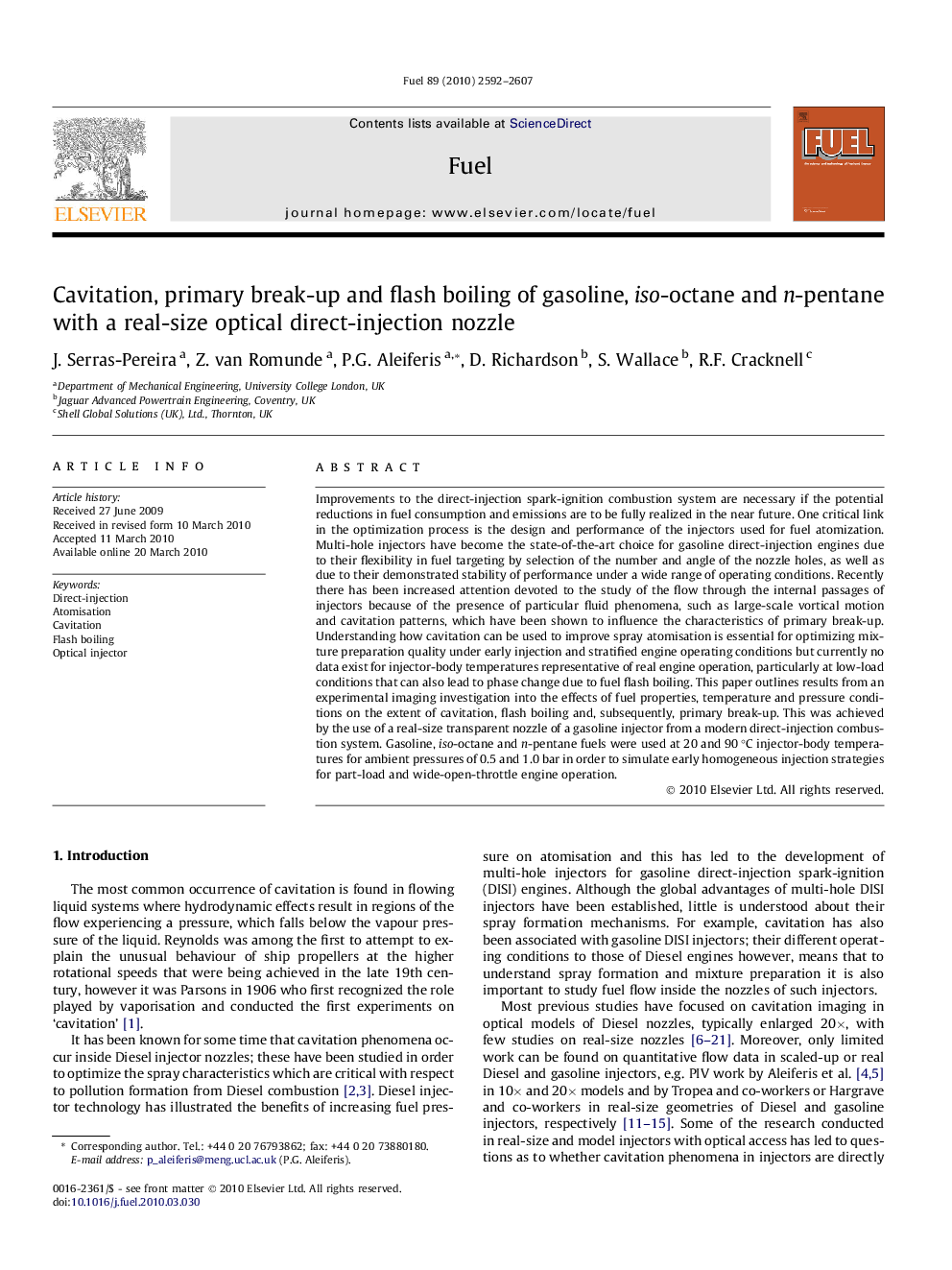| Article ID | Journal | Published Year | Pages | File Type |
|---|---|---|---|---|
| 207095 | Fuel | 2010 | 16 Pages |
Improvements to the direct-injection spark-ignition combustion system are necessary if the potential reductions in fuel consumption and emissions are to be fully realized in the near future. One critical link in the optimization process is the design and performance of the injectors used for fuel atomization. Multi-hole injectors have become the state-of-the-art choice for gasoline direct-injection engines due to their flexibility in fuel targeting by selection of the number and angle of the nozzle holes, as well as due to their demonstrated stability of performance under a wide range of operating conditions. Recently there has been increased attention devoted to the study of the flow through the internal passages of injectors because of the presence of particular fluid phenomena, such as large-scale vortical motion and cavitation patterns, which have been shown to influence the characteristics of primary break-up. Understanding how cavitation can be used to improve spray atomisation is essential for optimizing mixture preparation quality under early injection and stratified engine operating conditions but currently no data exist for injector-body temperatures representative of real engine operation, particularly at low-load conditions that can also lead to phase change due to fuel flash boiling. This paper outlines results from an experimental imaging investigation into the effects of fuel properties, temperature and pressure conditions on the extent of cavitation, flash boiling and, subsequently, primary break-up. This was achieved by the use of a real-size transparent nozzle of a gasoline injector from a modern direct-injection combustion system. Gasoline, iso-octane and n-pentane fuels were used at 20 and 90 °C injector-body temperatures for ambient pressures of 0.5 and 1.0 bar in order to simulate early homogeneous injection strategies for part-load and wide-open-throttle engine operation.
